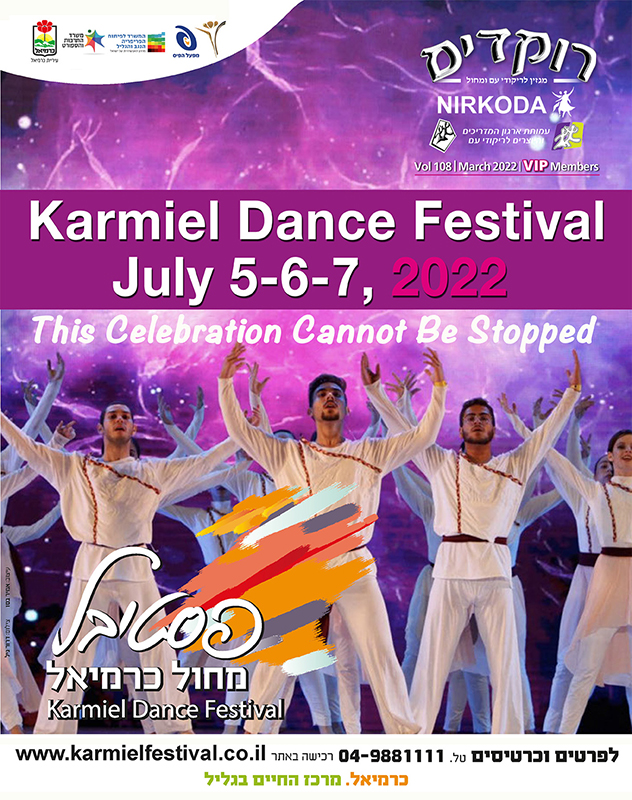- Home
- Rokdim Nirkoda 108
- Music Of The Caucasus In Israeli Dances
Music Of The Caucasus In Israeli Dances
Tunes from the Caucasus region and their influence on Israeli folk dances
The Caucasus region comprises mountain ranges that extend from north of Turkey, through Armenia, Azerbaijan, Georgia (Gruzia), up to the Chechen Republic of Russia situated in the North Caucasus in Eastern Europe, close to the Caspian Sea. Armenia and Georgia are Christian, while Turkey, Azerbaijan and Chechnya are Muslim. The region comprises numerous tribes, some of which had autonomous regions in the former USSR, such as Ossetia, Dagestan, Ingushetia, as well as tribes of Circassians and Lezgins. The tribes of the Caucasus region are known for their warrior spirit. Ottoman Turkey has deported groups of Circassians to the North of (future) Israel, where they settled in the villages of Kfar Kama and Reyhania.
Israeli dances have adopted music of numerous regions and communities, including Yemen and North Africa, as well as Ladino and Greek songs. We shall survey several Israeli dances that were influenced by the less-known music and dance traditions particular to the Caucasus region.
[picture 1: Map of the Caucasus region]

Israeli dances have adopted music of numerous regions and communities, including Yemen and North Africa, as well as Ladino and Greek songs. We shall survey several Israeli dances that were influenced by the less-known music and dance traditions particular to the Caucasus region.
“HaRimon” and “Kad el Kad”
“HaRimon” (The Pomegranate, 1947) by Zeev Chavatzelet and “Kad el Kad” (Jug-to-Jug, 1975) by Yankele Levy were choreographed 25 years apart, so what do they have in common? It turns out that the tunes of both come from operas by Uzeyir Hajibeyov, a national Azerbaijani composer, who was a pioneer of opera in the Muslim world.
The tune of “HaRimon” originates from “Arshin Mal Alan”, an opera from 1908 about a cloth peddler who wins the heart of his beloved. It became a highly successful musical film in 1945. We do not know whether the movie was shown in Israel, but Yuval Chavatzelet wrote me that probably his father, Zeev, heard it when he traveled to the USSR for an international gathering of Communist youth.
The lyrics of the Israeli song (“HaMichtav – The Letter”, written by Didi Menosi in the 50’s) are not related to the original song, “Pulun Var?” (Do you have money?) – in which the female servant says to the male servant, “If you have money, I’ll marry you”, and he responds, “I do, I do!”. The name of the dance is not related to either – it is said that Zeev Chavatzelet was impressed by the pomegranate tree he saw out his window.
[picture 2 – Scene from “Arshin Mal Alan”]

Finding the source of “Kad el Kad” is similar to a detective story, a thriller. I learned the dance in Iris Avner‘s chug (dance session). I was intrigued as to why such a graceful dance to such lovely music is no longer danced. I was interested in the origin of the melody, and on various occasions, it was indicated as Turkish, Afghan, Persian or Bukhari.
One day, I came to work early and began my day with playing a flute, including the tune of “Kad el Kad – Jug-to-Jug”, among others. Suddenly the office cleaner rushed to me and asked, “How do you know it? It’s a song from my childhood!” It turned out that she’s from Azerbaijan and the tune is from another of Hajibeyov’s operettas – “If Not This One, Then That One.” It is a about a father selling his daughter in marriage to an old wealthy merchant and that she had heard the tune in her family.
The opera became a successful movie in 1956, a couple of years before the appearance of the Hebrew song. The Hebrew lyrics, written by Moshe Giora Elimelech, talk about the love and admiration of a girl and here too, the lyrics are unrelated to the original opera in which a girl and her servant prove to the old merchant that he wants to marry a young woman.
It is interesting that in the instructional video of “Kad el Kad” on “Rokdim” and also on the recording by “Lehakat Demol”, who perform the song, it is stated that the melody is Turkish. Unfortunately, Yankele Levy is no longer with us to ask, but Yoav Sidi and Orly Shachar stated that he had researched the melodies he used. Given that Hajibeyov had also incorporated folk melodies into his operas, and the whole area of Azerbaijan-Persia-Turkey is one cultural space, Yankele’s statement that the melody is Turkish is not entirely unfounded.
[picture 3 – Scene from “If Not This One, Then That One”]

[picture 4 – Yankele Levy leading “Kad el Kad”]

“El Midbari – To the Desert”
This tune to the dance (1977) by Bentzi Tiram (https://bit.ly/3GGc56R) also originates in Azerbaijan. The lyrics of the Hebrew song, “Hod Midbari – Echo of the Desert”, sung by Binyamin Avigal, has nothing to do with the original that praises the workers in the oil industry – “We will take out the oil wherever it hides, in the depths of the earth or at the bottom of the sea, to quench the thirst of our homeland, Azerbaijan!” Here, too, the source of the Israeli song melody is noted as “folk” – one of the most prolific “composers” in history.
“Eshkolit – Grapefruit”
The dance “Eshkolit – Grapefruit” by Dudu Edry (1980) relates to Zeev Chavatzelet, who wrote the Hebrew lyrics – this time to an Armenian tune. The Hebrew lyrics, praising love and youth, are in sharp contrast to the Armenian song, that praises a national hero who died in a Turkish prison, and calls for revenge. How did Zeev Chavatzelet become aware of the tune? His son suspects that this is also related to his visit in the USSR.
[picture 5 – Dudu Edry demonstrates “Eshkolit”]

According to Yoav Sidi, Zeev Chavatzelet and Lehakat Beit Alfa prepared three holiday dances for the second Dalia Festival (1947): “Chag”, “Eshkolit” and “HaRimon”, which were danced with fruit in their hands. He mentioned that the dance, “Har VaKar” by Chavatzelet is based on a Tatar melody – another ethnic group that extended from the Caucasus to Mongolia. It is likely that the oriental sound of the music of southern regions of the USSR appealed to Zeev.
“Machol Gruzini”
The tune of “Machol Gruzini” (“Georgian dance”, 1991) of Moshiko Itzhak-Halevy does not originate from Georgia – it was written by Moshiko. In his early years, Moshiko attended the ballet studio of Mia Arbatova, where he was exposed to folk dances, among them, the dances of the Caucasus such as Lezginka – a dance that expresses a warrior spirit that Moshiko infused into the energetic melody and into the dance.
“Shir Megaresh et HaChoshech”
The dance “Shir Megaresh et HaChoshech” (1992) by Roni Siman Tov is based on a performance by Chava Albertstein, who also wrote the lyrics. The tune is from a Georgian song, “Gogoli Gogoli”, that talks about a man that will win the heart of the girl by being an outstanding laborer. The song was recorded in Israel by the “Kolan” quartet, as well as by the duo, “Hedva and David”. Yoav Ashriel, who was among the first to choreograph dances to songs with non-Hebrew lyrics, choreographed a partner dance to it in 1973, but it was abandoned in favor of Roni Siman Tov’s dance.
“Debka Eilon” and “Pa’amei Tamuz”
We are entering the 21st century. Ilan Swisa choreographed “Debka Eilon” in 2013 to a Circassian (Adyg, in their language) melody. The Circassian dance to this tune is called, “Leprissa”, a dance in Lezginka style.
Ilan told me that he has many Circassian friends from Reyhania and from Kfar Kama, which is close to Kfar Tavor, where he has a “harkada”, and that he was excited by their dances. Ilan’s dance borrows the energy and the style from the original dance, with hand movements and stomps. It is named after his son, Eilon. Although it has Israeli dance characteristics and is intended for the Israeli folk dance community, Ilan categorizes it as an international folk dance.
[picture 6 – “Debka Eilon”]

I hope you’ll forgive me for including the dance, “Pa’amei Tamuz”, choreographed by me, Naftali Chayat, here. It was choreographed in 2021 as an assignment in the Israeli Folk Dance Instructors’ course. I’m not sure whether Gadi Bitton, when he suggested the melody, “Shalaho”, by musician Erez Netz, was aware of its Caucasian origin.
As I searched for musical variants, wedding movies from all over the Caucasus appeared! It turned out to be danced in Georgia, North Turkey, and Chechnya; it is considered a national dance in Armenia, although the Azeri people claim it’s theirs. In Israel it is very popular in the Georgian Jewish community, and it was even featured in the movie, “Chatuna Meucheret – Late Marriage”, where Moni Moshonov dances to “Shalaho” at the Georgian-style wedding of his son. From the original dance, I borrowed the hand movements that symbolize an eagle, but otherwise, I consider it to be an Israeli dance based on the music of one of the Jewish communities. Some tell me it’s an international dance, so it seems to provoke the never-ending dispute of, “What is an Israeli dance?”
[picture 7 – “Pa’amei Tamuz”]

Summary
We have surveyed several Israeli dances, whose tunes from the Caucasus spread into the Israeli folk dance genre. Some have remained just melodies and others, where Hebrew lyrics were written, have become Israeli songs. It seems that the oriental style of the Caucasian melodies appealed to the Israeli songwriters, who often did not indicate the origin of the melody. The list of dances is likely to not be complete, and it does not cover adjacent regions such as Uzbekistan (“Mi Yitneni Ohf”, “BeBukhara HaYafa”, “Etz HaRimon”, “Rikud HaKad”, etc.). Other than the detective work of uncovering the origins of the melodies, it again raises the question of boundaries between the “Israeli” and the non-Israeli. Did “Eshkolit” become any less Israeli after we discovered its Armenian origin? Is the fact that “Shalaho” is popular in one of the communities in Israel makes “Paamei Tamuz” Israeli, or is it still international?
In any case, the music and dance of the Caucasus region have enriched the world of Israeli folk dance with quite a few beautiful dances that we can continue to enjoy.
Acknowledgements
I would like to thank Yoav Sidi, Orly Shachar, Yuval Chavazelet, Nir Dan, Meir Cohen, Ilan Swisa and others, who added information and opinions of relevance in conversations, correspondence and discussion forums.
Links:
1) Wikipedia article on the Caucasus (and the source of the map): https://en.wikipedia.org/wiki/Caucasus
2) Source of “HaRimon”: https://youtu.be/kYgVCX4Xiog
3) Source of “Kad el Kad”: https://youtu.be/z_omnV0Oy7I?t=1775; Yankele Levy dancing: https://www.facebook.com/photo/?fbid=4357163179373&set=a.4357134698661
4) Souce of “Hod Midbari” – Echo of the Desert”: https://youtu.be/gUJySNKC8Pc
5) Source of “Eshkolit”: https://youtu.be/c5V7VOJfNQ0 (Youtube channel of Rachel Frohmann Komlosh), https://youtu.be/-NwV–NYUGc
6) Circassian dance, “Leprissa”: https://youtu.be/AZ0iu1oUbDo
7) “Gogoli Gogoli” performed by the “Kolan” quartet: https://youtu.be/IVZJfIWJMrE
8) “Shalaho” dance in the movie, “Late Marriage”: https://youtu.be/_Kgm-kliuKA?t=21
9) Extensive list of Israeli songs and their international origin: https://bit.ly/3nj98kT
- Naftali Chayat emigrated from Lithuania (then USSR) at the age of 10 and retained the Russian language and interest in the culture of Soviet nations. Naftali participates in Israeli and Balkan dancing. In 2021 he completed the Israeli Folk Dance Instructors course, during which “Pa’amei Tamuz” was choreographed. Naftali plays flute and other musical instruments, and works in the field of electronic engineering.









Comments
התראות